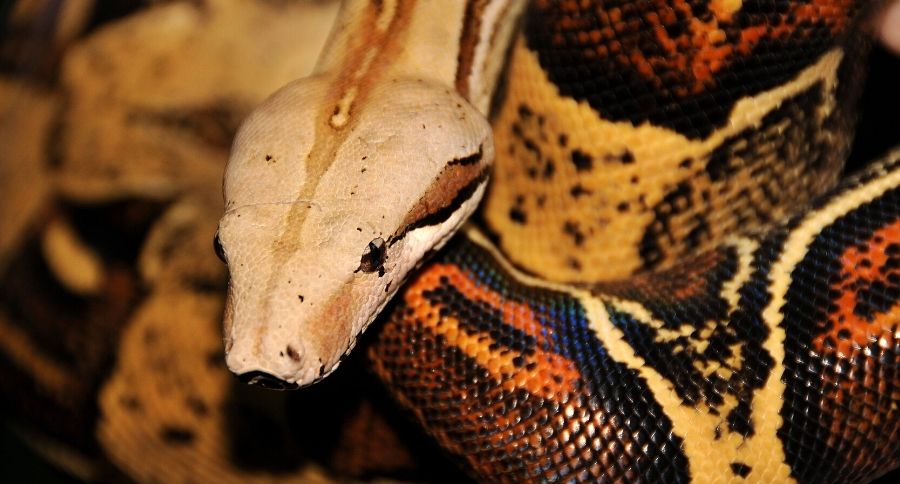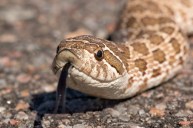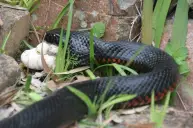Red-tailed boas require a large area and need consistent interaction with humans to remain tame. They are a very popular pet among reptile lovers!
Fortunately, they are not venomous and adapt well to life in captivity. When purchasing a pet boa it's always best to buy one that was bred and raised in captivity. Make sure you are prepared before bringing a red-tailed boa home because these snakes live up to 25-30 years.
They grow to be 8-10 feet in length and can weigh about 50 pounds when it is full-grown. These snakes require someone with some experience and certainly a reptile owner ready to make a big commitment.
Behavior and temperament
https://www.instagram.com/p/B9B-CkLF81J/
According to The Spruce Pets, the reason red-tailed boas are so popular is due in part to their typically docile temperament.
"They aren't usually aggressive snakes but even if they aren't upset they can do damage to a person quite easily by constricting (to hang on to someone's hand, neck, or arm) or biting you if they think your hand is food."
They are usually inactivity during the day and move around and hunt for prey at night. They generally sleep 12 hours a day and are active for 12. They may get irritable when your snake needs to shed.
Housing red-tailed boa
PetCo recommends you don't house different species of snakes together.
Basic housing requirements include:
- Appropriately sized and shaped habitat for an adult red-tailed boa to accommodate normal behavior and exercise.
- Aspen shavings, mulch-type such as coconut fiber bedding or reptile bark; dampened sphagnum moss.
- Provide a hiding area just large enough for your snake to fit inside and a branch or décor to climb on. Maintain 40-60 percent humidity; higher during shedding.
- Temperature gradient (95 degrees for the warm end and 78 degrees for the cool end); recommend radiant heat.
- Provide 8-12 hours of light daily. Don't leave white light on at all times; a nocturnal or infrared light should be used at night.
Health issues
https://www.instagram.com/p/B79CIT-g8zf/
There are four main health issues you should watch out for.
- Dermatitis
- Respiratory disease
- Stomatitis
- Ticks and mites
How do you choose?
There are many questions you should ask yourself before taking on this enormous responsibility. Is there a vet in your area that cares for snakes? Do you have someone to take care of your snake if you travel?
Join a local club or locate online forums where you can discuss issues with other boa owners. They are not legal to own in every state so be sure to check your local laws.
Fun facts about the red-tailed boa
A red-tailed boa constrictor or red tail boa (common name) is one of the large snakes to consider if you're hoping for an exotic pet. Also, remember that inviting this snake into your home is a long-term commitment!
- Feeding young boas: feed juveniles once a week, adults every one to two weeks.
- What should you be feeding? They will be eating small mammals like rabbits and large rats. Prey items should be killed prior to feeding them to your snake and offered in an enclosure used only for feeding. Frozen rodents must be thawed to room temperature.
- You'll need fresh, clean, chlorine-free water should be available at all times in a water bowl large enough for your snake to soak in.
- Health problems can vary—mites are the issue. The most serious disease that can affect boa constrictors is inclusion body disease or IBD. This is a fatal retrovirus, akin to HIV in humans. This virus can lay dormant for years before the snake shows any sign of illness.
- You need to provide an enclosure large enough for the boa to coil completely under the basking site or basking spot and still have enough room for at least three fourths of the cage floor to be a cooler temperature.
Red tail boas are native to Brazil and nearby areas where they spend their time in rain forests and lowlands.
Also, snakes are escape artists in general! Your enclosure must be appropriate for an adult-sized red-tailed boa so no screen tops! They need hiding places, too, and heating elements (heat emitters) must be researched before you set up their enclosure.
Do you own a reptile or a snake? Please leave us a comment below!




